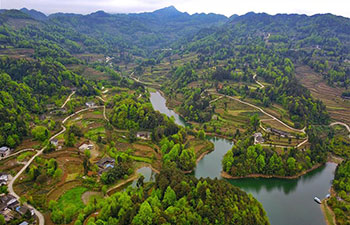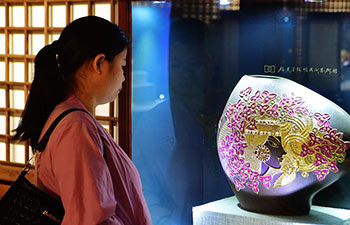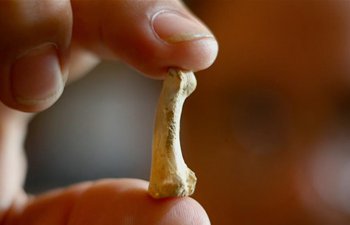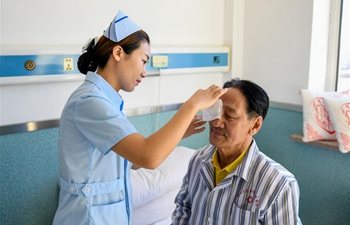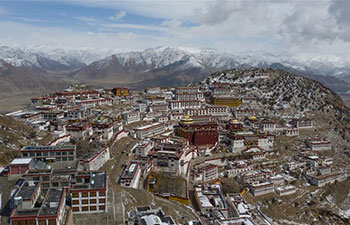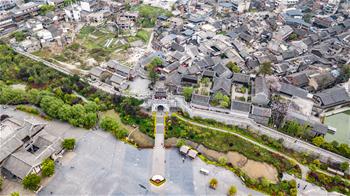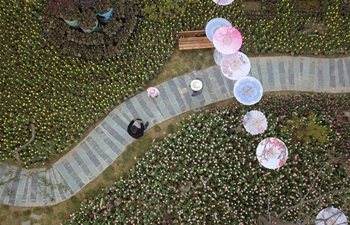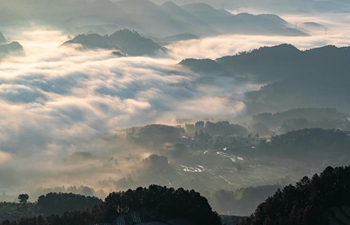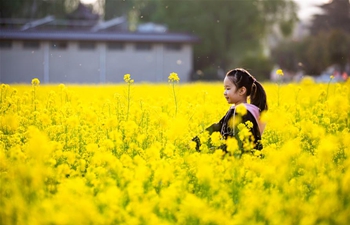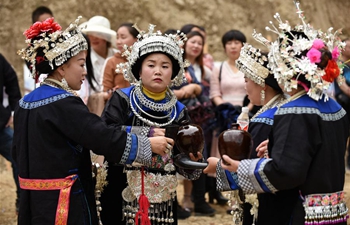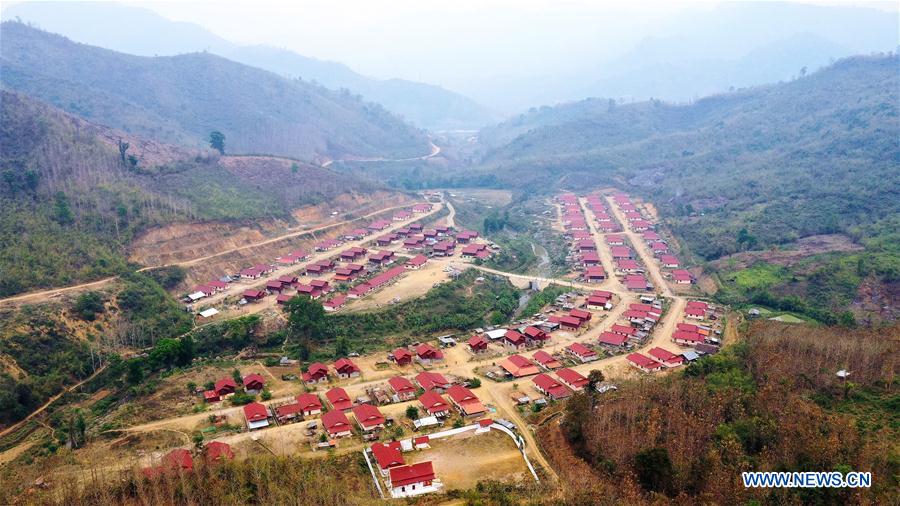
An immigrant village for the Nam Ou River project is seen in northern Laos, March 27, 2019. The Nam Ou River project, a Chinese-developed hydropower plant in northern Laos, has not only brought electric power to thousands of Lao homes, but also become a new scenic spot in the country. (Xinhua/Liu Yongqiang)
by Zhang Jianhua, Wang Shan
VIENTIANE, April 11 (Xinhua) -- The Nam Ou River project, a Chinese-developed hydropower plant in northern Laos, has not only brought electric power to thousands of Lao homes, but also become a new scenic spot in the country.
Inspecting the project this January, Phakkhavan, a Lao environment assessment official, was deeply impressed by what the Chinese developer -- ChinaPower had achieved in helping locals realize sustainable development.
"It (ChinaPower) has carried out a lot of innovative work combining localization and sustainable development while fulfilling the responsibilities of environmental protection regulated by franchise agreement," the official with Lao Ministry of Environment and Natural Resources said.
The Nam Ou River hydropower plant, a project under the China-proprosed Belt and Road Initiative and also the first Chinese company-run project to win the development rights of a whole river basin in the country, is highly valued by Chinese and Lao governments and people.
Bounpheng, a local employee of PowerChina who has witnessed the development of the Nam Ou River project, said that during construction, the Chinese company has been doing its utmost to carry out ecological protection and livelihood improvement, attaching great importance to environmental protection.
The project is planned to be developed in two phases, with a total installed capacity of 1.272 million kilowatts and an average annual generating capacity of about 5.064 billion kilowatt-hours. When completed, it will guarantee 12 percent of the electricity supply in Laos.
At the very beginning of the project more than a decade ago, PowerChina scientifically proposed a development plan of the seven-dam cascade project, in an effort to minimize the impact on the environment and cut the number of residents that need to be relocated.
It has also tried to reduce submerged land, especially farm land, as much as possible.
In mid-March, Huang Yande, assisting general manager of PowerChina Resources Limited and general manager of the branch company in Laos, told Xinhua that PowerChina always follows the principle of "green development and ecological development", and persists in achieving its goals at the highest standards, so as to fulfill its responsibility of environmental protection.
On Tree Planting Day in spring, all cascade power stations, together with local migration committees, plant fruit trees in the villages.
"The power stations provide us with saplings of mango, jackfruit, grapefruit, and coconut, and they often invite experts to impart us knowledge about fruit-tree planting and daily maintenance," said Sengdao, a Nam Ou villager.
According to the plan for the Nam Ou River project, 28 immigrant villages have been built for resettlement of more than 2,300 households, involving more than 12,600 people.
Last September, Luang Prabang Provincial Department of Environment and Natural Resources granted ecological and environmental protection award to the Nam Ou River project, appreciating contributions the project has made to local environmental protection.
"The Nam Ou River project implemented by PowerChina has set an example for many other enterprises, as it pursues a high-level management standard and owns a detailed work plan," said Chanthavong, head of the department.
The first phase of the project, comprising the Nam Ou 2, 5 and 6 plants and having a total installed capacity of 540 MW, has started its commercial operation on January 1, 2017. By March 14, 2019, the total cumulative power generation has amounted to 3.97 billion KWH, lighting tens of thousands of homes.
The total installed capacity of the second phase of the project, comprising the Nam Ou 1, 3, 4 and 7 plants, is 732 MW with a power generating capacity of 2,874 GWh annually. This project is in the peak period of construction, and it is expected to be completed by 2020.
Once the whole basin plants are in full operation, a string of "seven dazzling pearls" will make the Belt and Road Initiative more shining in Laos.
